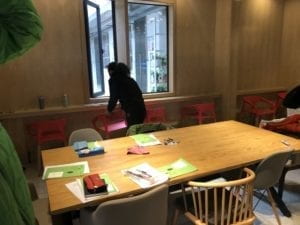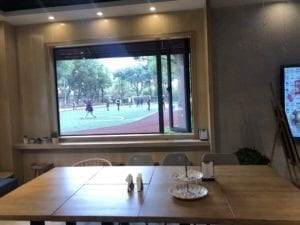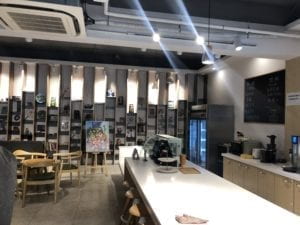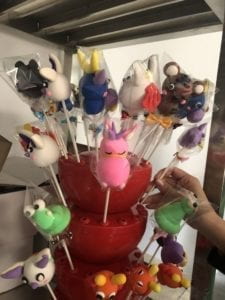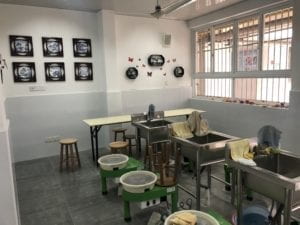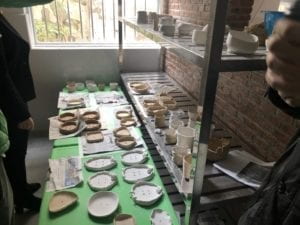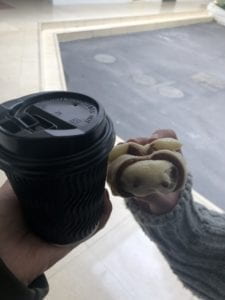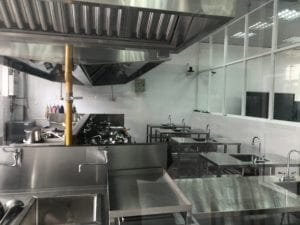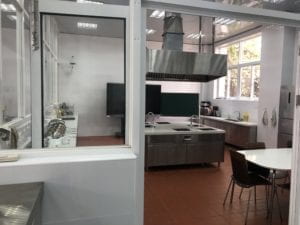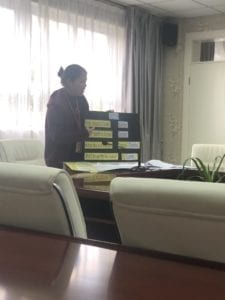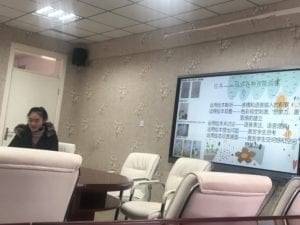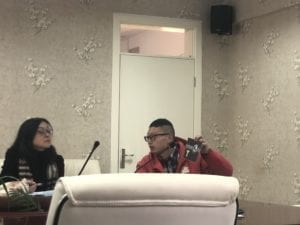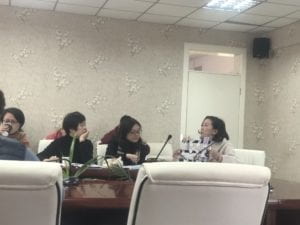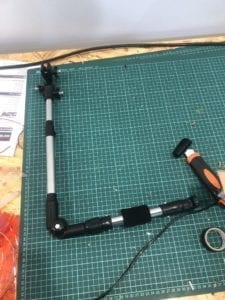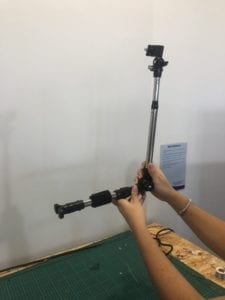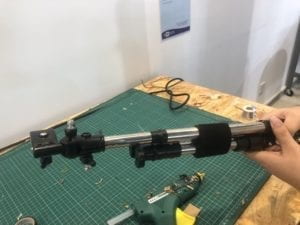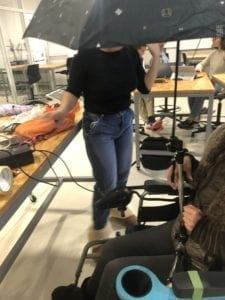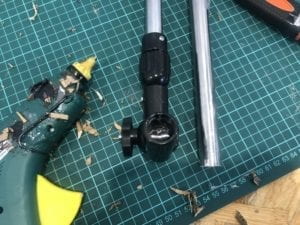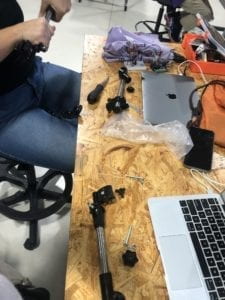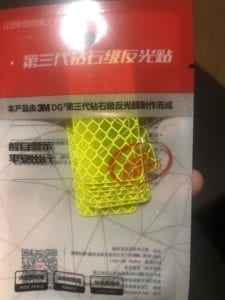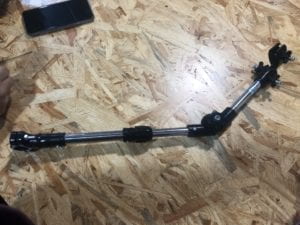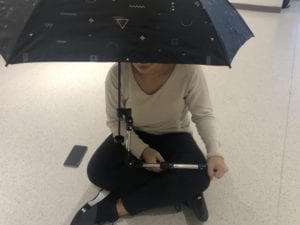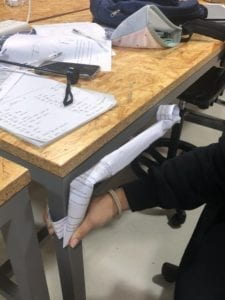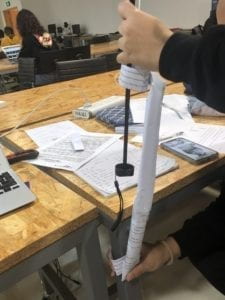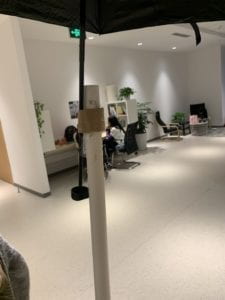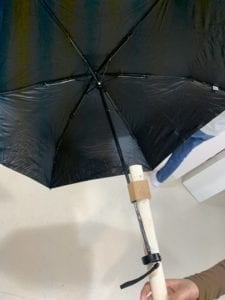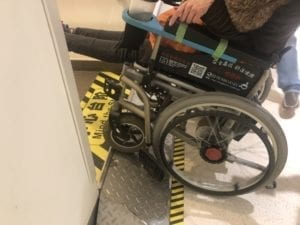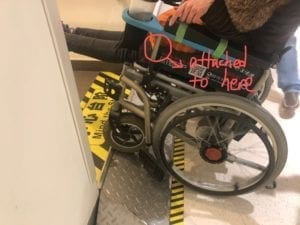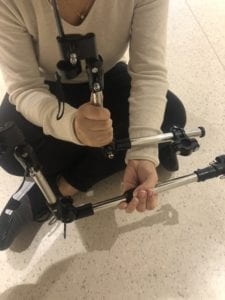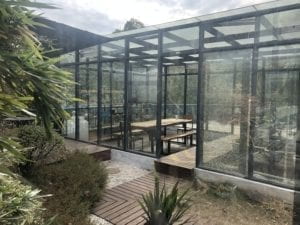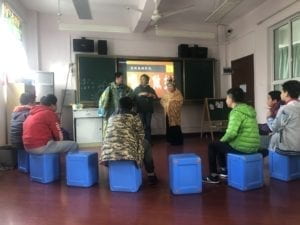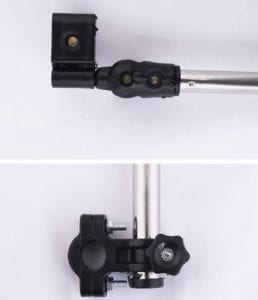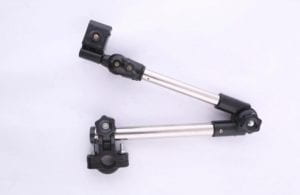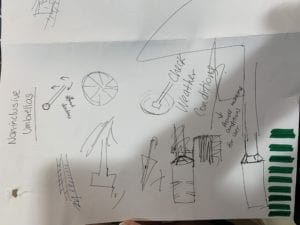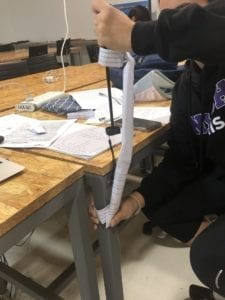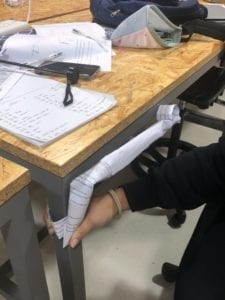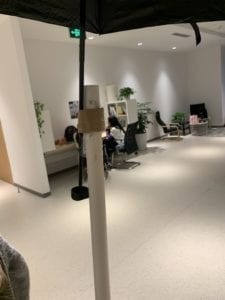1. Describe your partner
My partner is called Orange. She is an energetic, open-minded, positive woman. She attended Hackability in the summer, and she got the product from that workshop, which is a cup holder. She is easy-going, and the communication between us is smooth. She is very participative in attempting to improve the prototypes we bring in for her to try on every week. She is also eager about the progress we have made with her umbrella holder, and her enthusiasm inspires us a lot.
Orange is very observant of life. When asked if there was anything inconvenient for her in our academic building, she gave her answer: some elevators for 1-15F have no handrails or lower buttons, and she can’t push the higher ones. Also, she told us that some floors do not have accessible toilets for the disabled, and even if they did, the slope of the step of the accessible toilet was too steep for her wheelchair to climb. She is good at finding many small things in life and can inspire my partners and me a lot.
2. What are their desires/challenges/difficulties?
She is clear about what her problem is and what the requirements would be, which helps us define the question we need to solve. Her main difficulty is that when it rains, it is inconvenient for her to hold the umbrella with one hand and control the wheelchair with the other. She wants us to help her make an umbrella holder that could attach to her wheelchair to support her umbrella. She wants to put away the umbrella stand when it’s not raining. Also, she told us that she seldom goes out at night because she’s afraid the cars on the road won’t be able to see her wheelchair in the dark, which is dangerous.
3. What is your project? 1 paragraph description + Pictures or Photos or Videos
Our project is a removable, collapsible, stable umbrella holder. It is mainly made of steel and plastic, as shown in the figure below, so it’s stable enough to support the umbrella. There are many rotating areas on the holder, so the holder can easily adjust the angle according to the needs of Orange. This product can help Orange to free her hands on rainy days, and she doesn’t have to worry about going out on rainy days. When not in use, the holder can be secured to the chair by straps.



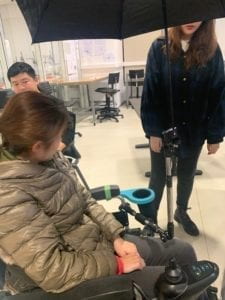
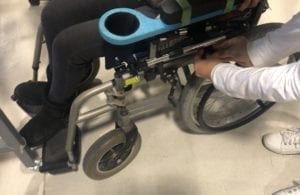
4. Development process. Include photos and video(s)
We made the first model out of paper, determining where the holder should be placed in the wheelchair, how to rotate it, how to fold it. And then, we tested the second prototype made out of the harder material, a water pipe, to see how hard the material should be to support the umbrella and further discussed how to fix the bottom of the umbrella. During the second week, we used the second model to measure the length and width of some parts of the wheelchair and to determine in what way the umbrella holder would rotate.




Then we got the model with hard steel tubes, assemble the parts, and discussed how the holder could be attached to the wheelchair. We tried many different rotating angles and positions, and finally found a feasible model (as shown in the figure below). When not in use, the holder can be easily put away. Combined with the pictures of the wheelchair, we have decided which part of the wheelchair we are going to install the holder.



During the third week, we met Orange and tested the prototype in her wheelchair. It turned out that the vertical length was too short and it needed to be increased.

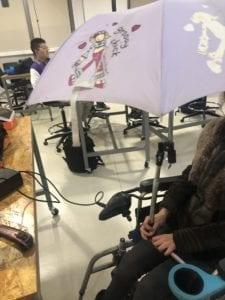
Also, according to the requirements of Orange, the transverse length of the support should be shortened. Since each part of the holder had been completely connected, my partner and I decided to take the holder apart, reassemble and connect it. We removed the four iron pipes from the previous two prototypes, using the shorter one as the transverse pipe and the longest one as the longitudinal pipe. We used heated glue and screws to make the holder solid enough to hold the umbrella. So the length problem is solved.


Also, when the holder is not in use, after discussing with Orange, we decided to use a strap to tie it onto the wheelchair. We attached the hook and loop fastener to the pipe using heated glue so that it can tie the other pipe firmly.

During the final week, after testing it with Orange, I found all good but one part of the holder was still not fixed. Then we reinforced it again with a drill and hot glue to make sure the umbrella holder won’t come loose.
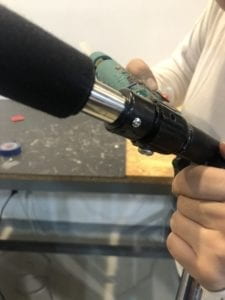
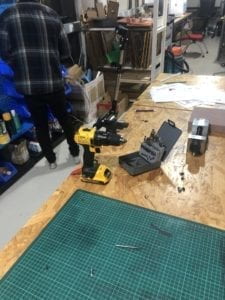
What’s more, when interviewing with Orange, she told us that she seldom goes out at night because she’s afraid the cars on the road won’t be able to see her wheelchair, which could be dangerous. To solve this problem, we put reflective stickers on orange’s wheelchair in all directions, so that when the lights hit orange’s wheelchair, the stickers will reflect light, making orange safer to go out at night.

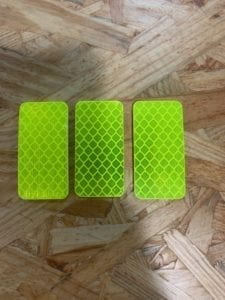
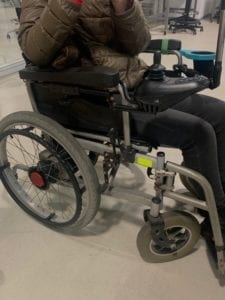
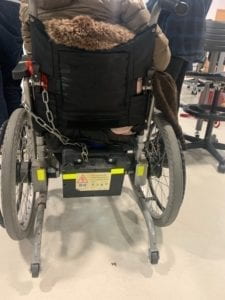
5. What were your difficulties?
Our first difficulty is the length problem of the umbrella holder. We started with a model where the vertical length was too small and the horizontal length was too large. But our model is made of iron pipes and plastic, which is hard to separate. We had to take apart all the screws, iron pipes and other parts to design the most suitable combination of the material. And we had to make sure at last every part was connected tightly enough to hold the umbrella. This process requires patience and production ability. At first, I wasn’t sure I would be able to successfully reassemble the parts to adjust the length. But then, working with my partner, we gradually broke down the big task into some small tasks, such as first removing the tubes, then designing how to combine them, then assembling and fixing them. In this way, step by step, we achieved many small goals, and finally successfully completed the whole length adjustment process. In this process, I learned not to be afraid of the big task, but to break the task into small parts and actively seek solutions, so as to achieve the final goal.
Also, before the final week, we hadn’t let Orange test the product on the rainy days because of the weather condition (it wasn’t rainy those days) and time arrangement. Although Orange gave us feedback on the use of it after the final week, we didn’t have much information about the user feedback during the presentation. From this experience, I learned that I should pay more attention to the time arrangement in the next design process, leaving some certain time for users to give feedback.
6. What did you learn from this 4-week workshop?
First of all, I would like to thank Young for giving us such a precious opportunity to meet, talk to, understand and help people from different backgrounds. In this process, I’m glad that I not only made some contributions to help them improve their life quality but also made friends with them, understood their life status. After the completion of the project, we gave the umbrella holder to Orange. After a period of time, we received feedback from Orange. She told us that her friends all like her umbrella holder and wanted to buy it, and she also thought it was very practical and useful. Also, she appreciated the idea of reflective stickers, which helped her overcome the difficulty of going out at night. I am very happy that I can use what I have learned to help someone in need.
Second, I learned how to work as a team. Working with Ariana, we learn from each other and shared our ideas. We divided a project into four stages to complete it in a planned way and set goals for each stage. We respected each other’s opinions, worked toward a common goal, and did a lot of experiments to find out the best way. We actively encouraged each other even when we met difficulties. In the whole process of teamwork, I feel the importance of communication.
Third, I learned a lot about how to conduct the design. I am honored to have the opportunity to hear the excellent guest speakers teach us all kinds of knowledge, such as how to design products for user needs, how to communicate with children with intellectual disabilities, how to improve products after getting feedback, what the current status and the future of the activities such as Hackability is, and so on. I feel I understand the design thinking process [empathize(interview)–define the problem(give the conclusion)–ideate(ideas and get feedback)–prototype–test] and put it into practice during the 4-week workshop. It is a rewarding journey
7. The link to the presentation file: https://docs.google.com/presentation/d/1c8rkSclVnuvILxNL2SBONFhfhYq-gN0J-2rIKzg1IwA/edit?usp=sharing
